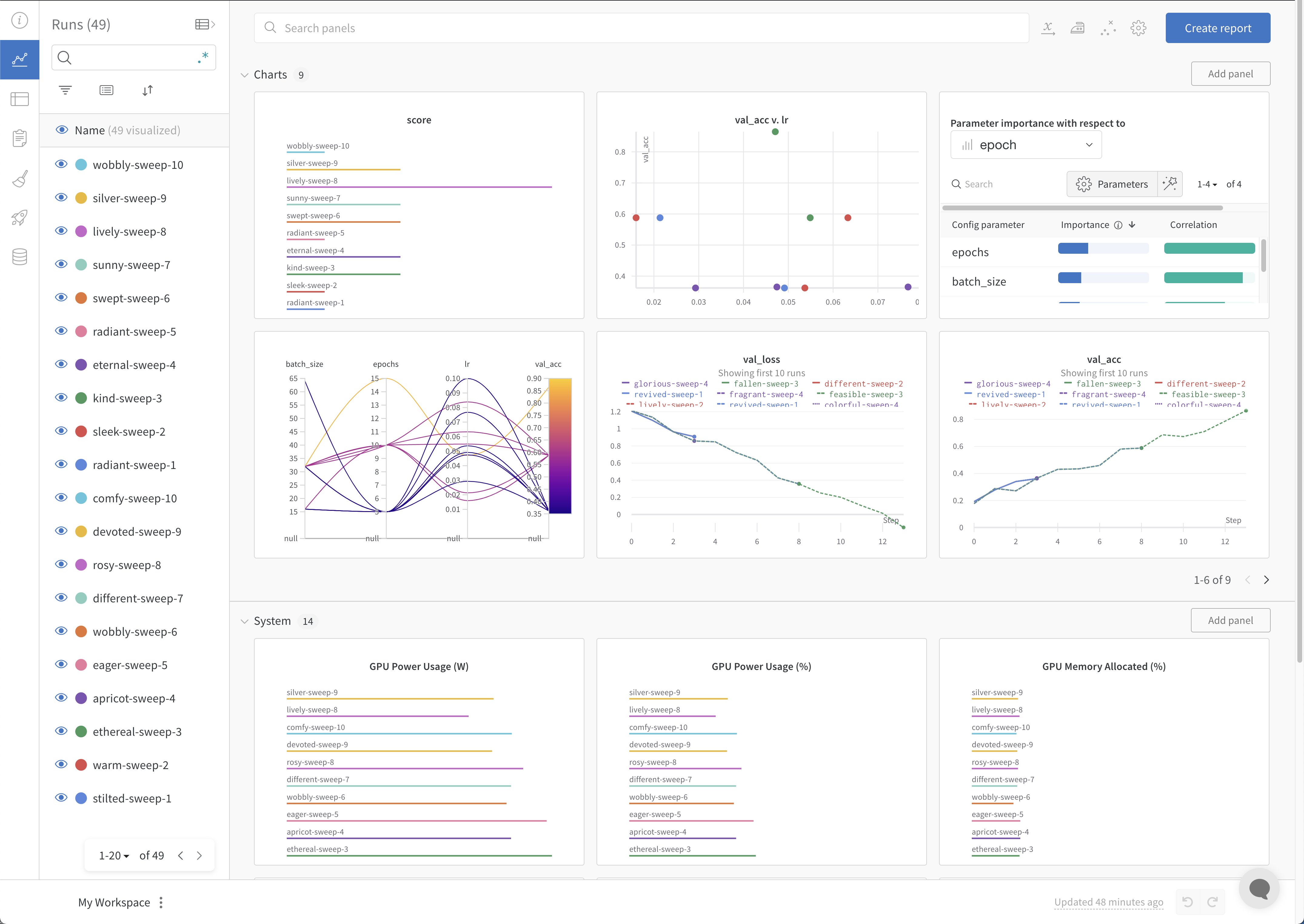Walkthrough
This page shows how to define, initialize, and run a sweep. There are four main steps:
- Set up your training code
- Define the search space with a sweep configuration
- Initialize the sweep
- Start the sweep agent
Copy and paste the following code into a Jupyter Notebook or Python script:
# Import the W&B Python Library and log into W&B
import wandb
wandb.login()
# 1: Define objective/training function
def objective(config):
score = config.x**3 + config.y
return score
def main():
wandb.init(project="my-first-sweep")
score = objective(wandb.config)
wandb.log({"score": score})
# 2: Define the search space
sweep_configuration = {
"method": "random",
"metric": {"goal": "minimize", "name": "score"},
"parameters": {
"x": {"max": 0.1, "min": 0.01},
"y": {"values": [1, 3, 7]},
},
}
# 3: Start the sweep
sweep_id = wandb.sweep(sweep=sweep_configuration, project="my-first-sweep")
wandb.agent(sweep_id, function=main, count=10)
The following sections break down and explains each step in the code sample.
Set up your training code
Define a training function that takes in hyperparameter values from wandb.config and uses them to train a model and return metrics.
Optionally provide the name of the project where you want the output of the W&B Run to be stored (project parameter in wandb.init). If the project is not specified, the run is put in an "Uncategorized" project.
Both the sweep and the run must be in the same project. Therefore, the name you provide when you initialize W&B must match the name of the project you provide when you initialize a sweep.
# 1: Define objective/training function
def objective(config):
score = config.x**3 + config.y
return score
def main():
wandb.init(project="my-first-sweep")
score = objective(wandb.config)
wandb.log({"score": score})
Define the search space with a sweep configuration
Within a dictionary, specify what hyperparameters you want to sweep over and. For more information about configuration options, see Define sweep configuration.
The proceeding example demonstrates a sweep configuration that uses a random search ('method':'random'). The sweep will randomly select a random set of values listed in the configuration for the batch size, epoch, and the learning rate.
Throughout the sweeps, W&B will maximize the metric specified in the metric key (metric). In the following example, W&B will maximize ('goal':'maximize') the validation accuracy ('val_acc').
# 2: Define the search space
sweep_configuration = {
"method": "random",
"metric": {"goal": "minimize", "name": "score"},
"parameters": {
"x": {"max": 0.1, "min": 0.01},
"y": {"values": [1, 3, 7]},
},
}
Initialize the Sweep
W&B uses a Sweep Controller to manage sweeps on the cloud (standard), locally (local) across one or more machines. For more information about Sweep Controllers, see Search and stop algorithms locally.
A sweep identification number is returned when you initialize a sweep:
sweep_id = wandb.sweep(sweep=sweep_configuration, project="my-first-sweep")
For more information about initializing sweeps, see Initialize sweeps.
Start the Sweep
Use the wandb.agent API call to start a sweep.
wandb.agent(sweep_id, function=main, count=10)
Visualize results (optional)
Open your project to see your live results in the W&B App dashboard. With just a few clicks, construct rich, interactive charts like parallel coordinates plots, parameter importance analyzes, and more.

For more information about how to visualize results, see Visualize sweep results. For an example dashboard, see this sample Sweeps Project.
Stop the agent (optional)
From the terminal, hit Ctrl+c to stop the run that the Sweep agent is currently running. To kill the agent, hit Ctrl+c again after the run is stopped.